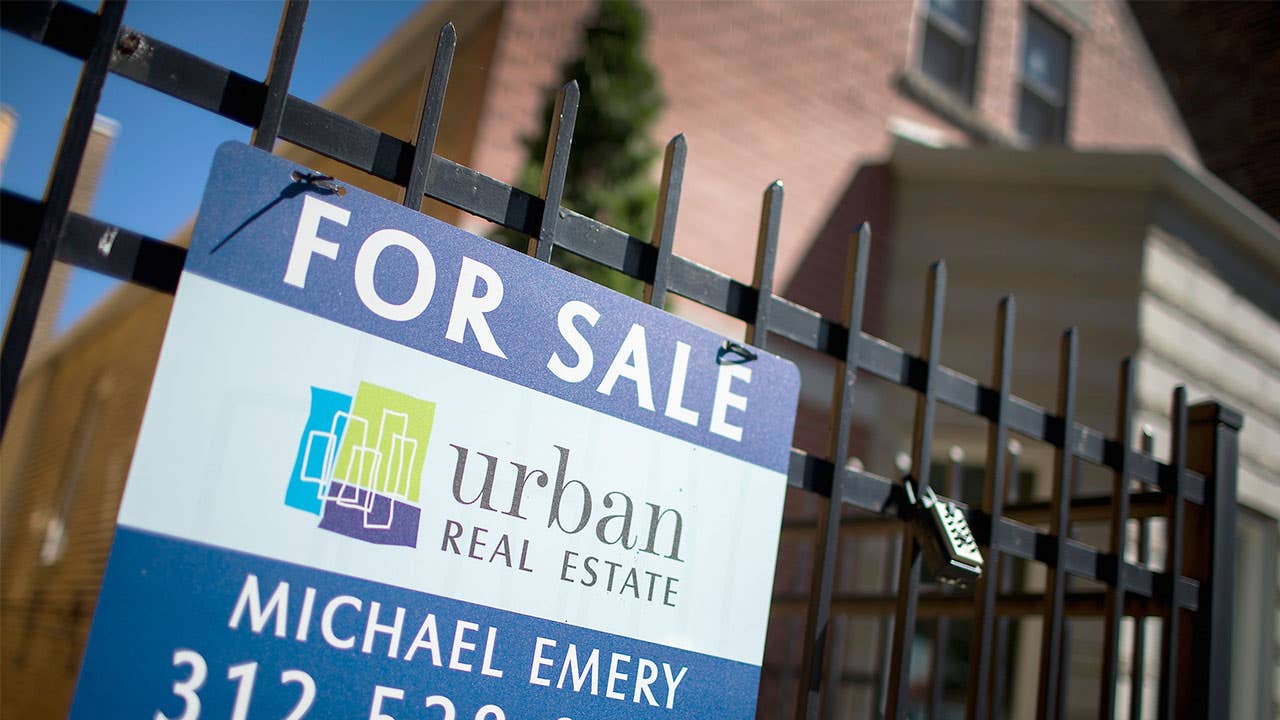How, and why, to sell a house as-is

The Bankrate promise
At Bankrate we strive to help you make smarter financial decisions. While we adhere to strict , this post may contain references to products from our partners. Here's an explanation for .
Our writers and editors used an in-house natural language generation platform to assist with portions of this article, allowing them to focus on adding information that is uniquely helpful. The article was reviewed, fact-checked and edited by our editorial staff prior to publication.
When preparing to sell your home, it can feel overwhelming to think about getting the property into pristine, show-ready shape. That’s especially true if you’ve been putting off a laundry list of repairs. But instead of sinking more money into it when what you really want is to get rid of it, there’s another option to consider: selling the home in as-is condition.
Selling a home as-is: A definition
Selling a house as-is means that a buyer will get the property in its exact, current condition, without any additional repairs or upgrades.
Most real estate transactions involve some back-and-forth bargaining — a buyer might request a credit if a home inspection identifies a serious plumbing issue, for example — but a property with the “as-is” distinction means that the seller isn’t going to address any changes to the home’s condition. In other words, what you see is what you get.
Broadly speaking, properties listed as-is tend to be priced lower, since the buyer will likely have to spend additional funds on renovations and improvements once they have the keys to the house.
Common reasons to sell a house as-is
People opt to sell homes in their current state for a variety of reasons. Financial constraints often play a significant role; some homeowners might lack the funds to carry out upgrades or repairs. Other reasons include time constraints and convenience. Here’s an example for each:
- Finances: Home-improvement projects can be very expensive. There are already plenty of costs that add up when selling a house, and a home in disrepair can raise those expenses further. For example, if the roof needs replacing, that can cost close to $10,000, or even more. Selling a house as-is allows you to skip that expense.
- Timeliness: An as-is sale can also expedite your timeline. Let’s say you need to relocate for work and unload your old home as quickly as possible. Undertaking a renovation project is going to seriously delay your listing. If there’s enough demand out there from buyers and you know you’ll get offers, selling it as-is can help speed up the process.
- Convenience: Sometimes, selling as-is just seems the most practical course. In cases where a home is inherited or needs to be sold following a divorce, for example, the seller might opt for an as-is sale to avoid the hassle and responsibility of preparing the house for the market.
Does selling as-is lose you money?
It’s hard to set a specific percentage on how much more, or less, you will make on an as-is sale versus fixing the home up before listing it. Much depends on the condition of the property, its location and how competitive the local real estate market is. In a strong seller’s market, the offer price gap typically found between an as-is sale and a regular sale will be smaller. And if a home is on a prime piece of property or in a highly desirable neighborhood — especially one that doesn’t see new listings often — its condition matters less because the location is paramount. But on the whole, it makes sense to expect lower offers when buyers know they will have to invest more money into repairs once they own the home.
Pros and cons of selling a house as-is
Just like any real estate transaction, an as-is home sale has upsides and downsides:
Pros
- Fewer costs: Avoiding expensive repairs helps you avoid potential financial strain. Plus, selling a house as-is means there’s no pressure to make it look perfect — no need to pay for professional staging inside or spruce up the curb appeal outside — which translates to less of a ding on your bank account.
- Faster process: Rather than waiting weeks or even months for repairs and other projects to be completed, you can list your home on the market and start showing it immediately. The sooner you list it, the sooner it can sell.
- Smoother closing: The upfront knowledge that no repairs will be made means there’s less negotiation and no haggling back and forth over concession requests, which smooths the path toward a straightforward, uncomplicated closing.
Cons
- Reduced profit: Homes sold as-is generally fetch a lower price, due to the anticipated repair costs the buyers will have to shoulder. Skipping the repairs saves you money on the front end, but you can’t expect to price an as-is property the same way you would if it were in better condition.
- Fewer buyers: Many house-hunters are looking for move-in-ready properties and don’t feel comfortable taking on a “project.” The number of interested buyers will likely be less for an as-is listing, as not all are interested in a house that needs work.
- Financing challenges: Potential buyers might face difficulties in securing a loan for a house in poor shape, which can prolong the selling timeframe. It might even lead to the deal falling through, particularly if the home appraisal comes in short of the agreed-upon price.
5 tips for selling a house as-is
These five tips can help get you to a smooth and successful as-is sale:
1. Be upfront about the home’s condition
Make it clear from the get-go — in the listing and any other marketing materials — that the home is being offered in as-is condition and that you will not be making repairs or addressing problems. And put it in writing in your purchase and sale agreement as well.
It may be useful to get a pre-listing home inspection so that you can be specific about exactly what work is needed and offer transparency to potential buyers. Providing inspection details upfront can instill trust, making the situation more appealing to a buyer and possibly accelerating the sale. The inspection report can also help you determine a fair list price.
2. Remember seller’s disclosures
Selling as-is doesn’t excuse you from disclosing known defects. For example, if you know there’s a mold problem or a crack in the foundation, you’re legally obligated to inform the buyer. If you misrepresent the condition of the property, you can be held liable for any issues that arise.
Nearly all states across the country have laws in place outlining what home sellers must disclose. Many have specific disclosure forms that sellers are legally obligated to complete and supply to buyers. And in many places, real estate brokers and agents are also required to disclose any known defects. “Known” is the operative word here, though: You’re responsible for disclosing information that’s within your personal knowledge — you’re not required to go searching for problems.
3. Keep things as tidy as possible
You might not be investing in any major upgrades, but that doesn’t mean you should give up on presenting your home in its best light. You can still make sure the property is neat and tidy. Keep the yard mowed, surfaces clean, beds made and dishes put away, and minimize clutter as much as possible. Be ready for viewings at all times, as you would with any home sale.
4. Know how low you can go
Think about what your bottom price would be — the lowest offer you’d be willing to accept — and be ready to make a quick counteroffer if someone bids lower. A real estate agent can help you negotiate or come up with an acceptable compromise.
Speaking of compromises: Even if you list as-is, some buyers will still try to negotiate based on home inspection results. If a few hundred (or thousand) dollars is all that’s standing in the way of making a deal, you can always relent and agree to make the repairs. Or, trim your asking price accordingly.
5. Find a trusted real estate agent
It might be tempting to try to sell your house on your own to avoid paying a Realtor’s commission fee, but you should still consider enlisting a professional with a track record of successfully helping others sell as-is. An experienced agent can help you set a price that accurately reflects the value of the home, and show it to buyers in a way that helps them see its potential.
FAQs
-
A house being sold as-is means that the seller is not going to make any repairs or be open to negotiation based on problems or work needed. What you see is what you get — you buy the house knowing that it needs work.
-
Before setting a list price for your home, do your best to honestly assess the condition of the property and what needs to be repaired. Try to estimate how much the needed work would cost. Then, do some research and look for comparable homes in your area that have recently sold. What condition were they in? If they were turnkey, you can subtract the amount of money your home needs in repairs from that amount to estimate an approximate price. But it’s smart to enlist the expertise of a real estate agent here, especially one who has experience selling as-is homes in your area.
-
While there are laws in place across the country surrounding seller disclosures, the law is less clear on what specifically constitutes as-is condition. “As-is” is not, strictly speaking, a legal term — that is, it’s not defined in any legal code. Rather, it’s a contractual term, commonly used in formal transactional agreements between two parties. In real estate, it conveys that the seller makes no warranties, guarantees or representations about the property’s condition or the working order of its features; will do nothing to change that condition or features; and that the buyer accepts these terms in purchasing the property. “As-is” sellers still have to meet their state disclosure standards, though, and they can still be held liable if they willfully misrepresent the property’s condition or conceal evidence of problems.
Related Articles




I’ve changed my mind about selling my home. Can I back out of the sale contract?